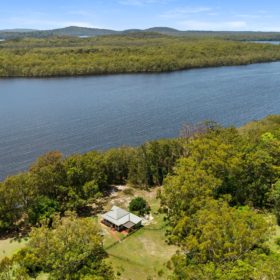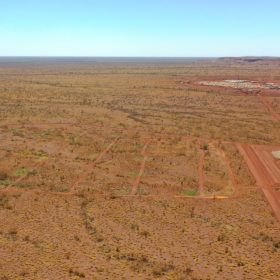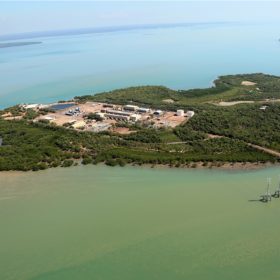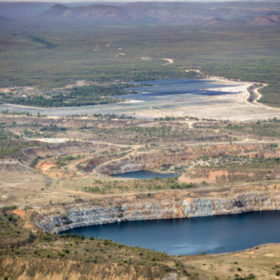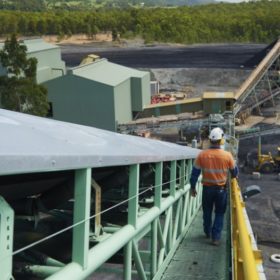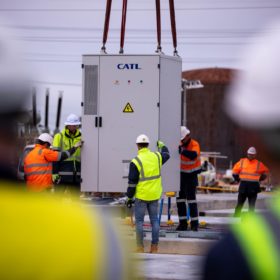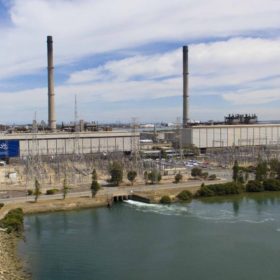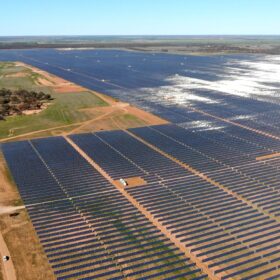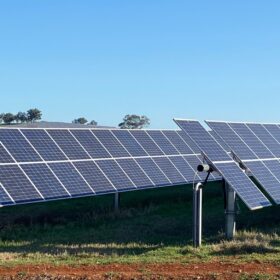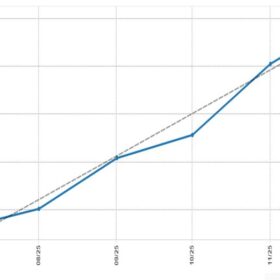NSW holiday cottage home to green hydrogen SAPS trial
A holiday house in New South Wales is thought to be the first residential property in Australia to make the switch to a hybrid solar and green hydrogen standalone power system with network service provider Essential Energy trialling the off-grid technology.
Rio Tinto plans $600 million spend to ramp up renewables plan in Pilbara
Resource-sector heavyweight Rio Tinto is planning to invest $600 million (USD 402 million) building two new solar farms and battery energy storage systems in the Pilbara region of Western Australia as part of the company’s efforts to decarbonise its iron ore operations.
Molten aluminium storage startup enters Australian market, apparently
In a decidedly confusing announcement, Swedish molten aluminium storage startup Azelio says it has secured a conditional order from relatively unknown Australian company MPG Built. Azelio says the order will see it provide “energy-as-a-service” using five of its TES.POD storage units combined with solar power.
Environmental approval paves way for integrated graphite supply chain
Environmental approval from the government of South Australia means Renascor Resources is now a step closer to realising its integrated graphite supply chain. Graphite is a key component in lithium-ion battery production and Renascor’s South Australian deposit is considered the largest outside of Africa.
NT to get ‘grid forming’ big battery as Darwin site hits construction milestone
Civil and building works have now been completed on the site of the Northern Territory’s $45 million (USD 30.2 million) big battery, known as the Darwin-Katherine Battery Energy Storage System. The 35 MVA battery is being delivered by Hitachi Energy and will deploy Virtual Synchronous Machine technology, allowing it to provide virtual inertia and system strength services to the grid.
Genex boosts capacity of Kidston clean energy project
With construction underway on a $295 million (USD 197 million) transmission project to connect the landmark Kidston Clean Energy Hub to the grid in far north Queensland, developer Genex Power has announced plans to boost the generation capacity of what is already Australia’s largest hybrid energy project combining wind, solar and pumped hydro.
Australian startup to fast-track gravity energy storage system
Australian renewable energy startup Green Gravity plans to accelerate the commercialisation of its gravitational energy storage technology – which aims to generate clean, dispatchable energy by lowering weights down old mine shafts – after inking an agreement with global professional services company GHD.
Renewable projects report prompts call for energy market reform
The Clean Energy Council has reiterated calls to reform the grid connection process to provide increased certainty and security for investors after a new report revealed only one renewable energy generation project reached financial close in Australia in the third quarter of 2022.
Lithium-vanadium battery for renewables storage
AMG Advanced Metallurgical Group has energised its first hybrid storage system based on lithium-ion batteries and vanadium redox flow batteries in Germany. The system reportedly combines the advantages and electrochemical properties of both storage technologies.
Rise of renewables sparks closure of Torrens Island gas power plant
Energy giant AGL has disclosed it will shutter its gas-fired Torrens Island B power station in South Australia within four years, citing the impending completion of a new electricity interconnector that will link power grids across three Australian states, unlocking gigawatts of new wind, solar PV and storage projects.
